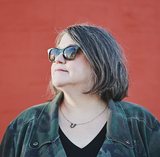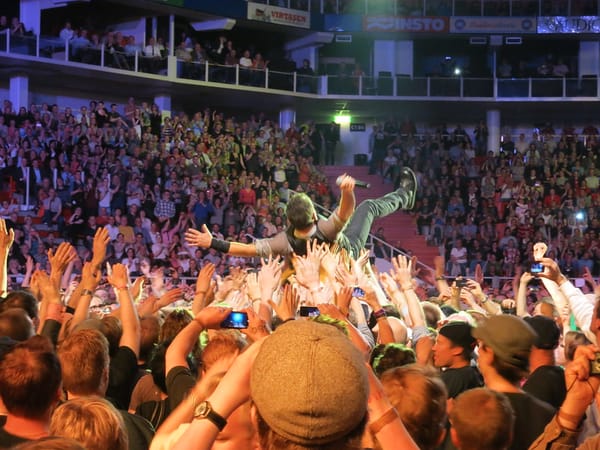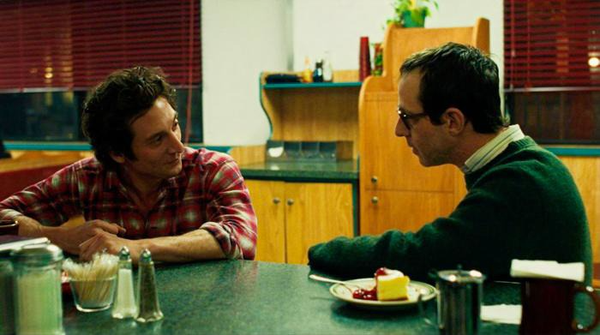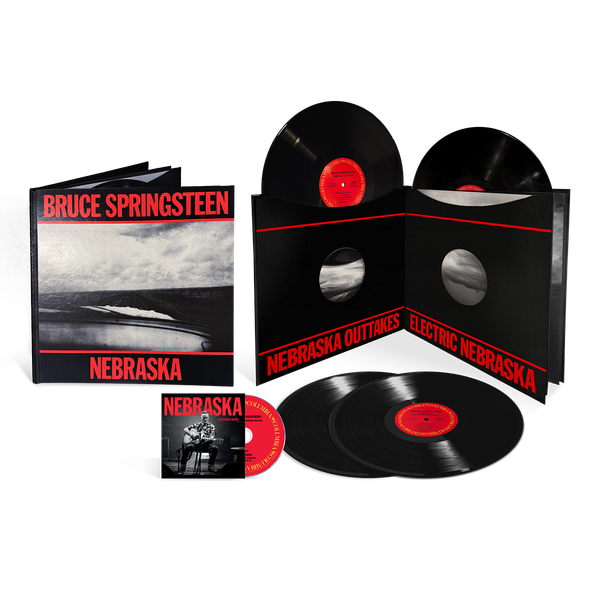The Evolution of Born to Run: "Night"
For the 50th anniversary of Born to Run, a track-by-track breakdown of the evolution of each of the songs on the record. Side 1, track 3.
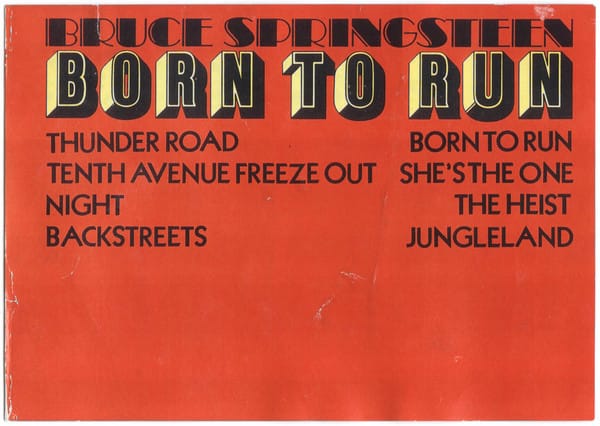
For the 50th anniversary of Born to Run, here's a track-by-track breakdown of the evolution of each of the songs on the record, going in order from start to finish. Side 1, track 3: “Night.”
“Night”’s journey is a fairly linear one; there are four known versions (including the album version), and only two of the demos are in circulation. A song called “The Night” was recorded at good old 914 Sound Studios in the late summer/fall 1974, and we have no idea what that sounds like. But given that the next two versions are almost identical to what was eventually released, it’s not a huge stretch to guess that that first version probably wasn’t that far from the final product.
The two circulating outtakes either derive from the second stint at 914 Sound Studios or they were recorded after the move to the Record Plant. V2 (going by the Brucebase labeling convention for the sake of consistency) has Bruce mumbling some lyrics throughout, while V3 has more robust (but still rudimentary) production. V3 is known as the one with double-tracked vocals and is slightly more polished. There’s no mumbling, there’s definitely more polished lyrics, but it’s still not the final version we all know and love.
We do know that the final album version was recorded on May 10, 1975, take 8 out of 10, marked GREAT - HOLD. In all of the versions, we get to experience the joy of listening to Roy Bittan’s emphatic piano melody that is part of the song’s very foundation -- he’s almost a member of the rhythm section in that he’s propelling the entire vehicle forward.
As discussed in the first and second installments of this series, it took a while for Bruce to figure out how to integrate the new material into the live show. “Night” wouldn’t make its debut until the first night at the Bottom Line on August 13. We don’t have a known setlist for the early show but we do for the late show so it very well could have been part of that very first set. But you know what isn’t in the set any more? “A Love So Fine.”
If you’re a writer and you stumble onto a great line, you’re going to keep trying to use that line until you find the exact right place for it. For example, one of the things that makes “Radio Nowhere” so great is that after decades of Bruce asking “Is there anybody alive out there?” he finally found a home for that line. With “Night,” we have another one of those candidates: Rat trap’s filled with soul crusaders.
That line first made its appearance in “A Love So Fine” and then when that song became “So Young and In Love” it maintained its position. It’s a great, extremely Springsteen-ian kind of line, the kind of thing I hope gave him great personal satisfaction when it emerged from his brain. And I think he knew what he had, and that he knew that he’d found the right place for it when he wrote “Night.”
“Night” is the stronger composition, no contest. “A Love So Fine” was yet another song about going out and listening to rock and roll. “So Young and In Love” is a personal favorite and it’s a more specific, more evolved version of basically the same story. “Night,” on the other hand, takes the core action and elevates it to one of catharsis: you work nine to five and somehow you survive till the night. It is the moment when the protagonists in his songs are maybe not “grown up,” but definitely entering adulthood or at least having to assume some of the responsibilities of an adult. It’s less fantastical than the stories he’d told in the past; no one thinks about how everyone at Greasy Lake could afford the gas to get there. The conflict here isn’t warring street factions, it’s capitalism and survival, which isn’t wondrous but it is absolutely relatable to most of the people who’d be buying this record.
It’s also worth looking at where the song falls on the record: our heroine has abandoned her post and ridden off into the great unknown, then we get to meet Scooter and the Big Man and hear the tale of how we got here. But now, it’s back to reality: get up every morning at the sound of the bell. There was not one person listening to this song that could not relate to that line. You work all day to blow ‘em away in the night.
The first line of the song probably got its start from a Steel Mill composition called “O Mama”:
You get up every morning at the sound of the bell
You stumble out the door just a-feeling like hell
I make it into class about a quarter past eight
I hear my teacher yakking at me 'cause I'm ten minutes late
Here’s Steel Mill performing this song – which sounds absolutely nothing like “Night” or anything else in the song’s evolutionary chain – at the Upstage, at Steel Mill’s second to last performance ever on January 22, 1971.
(I’ll be writing about this show at length at a later date, so please forgive me if you know the history of this particular tape and are wondering why I’m not talking about it here.)
It’s not that different at all from the sentiment expressed in “Night,” it’s just the perspective of a 22-year-old. Bruce Springsteen never had to wake up to an early alarm week after week to go to a job that he hated, but some of his bandmates did, and you know who else did? His parents. Think about all the stories that got told about hearing his dad wake up, go outside and climb underneath the car to get it started when there was frost on the ground in the morning. And while Adele Springsteen didn’t get the same level of public attention in the various stories told over the decades – she was on his side, after all – we know from “The Wish” that the sounds of his mother getting ready to go to work in the morning absolutely made an impression on him:
I remember in the morning, Ma, hearing your alarm clock ring
I'd lie in bed and listen to you getting ready for work,
the sound of your makeup case on the sink
There’s a bunch of handwritten song lists and inventories that have floated around the internet, some from auction sites – if you saw the Springsteen exhibit at the Rock and Roll Hall of Fame, there were several there that I wish I had spent the time to catalog instead of just gawking at – and while these aren’t dated and we don’t have any kind of chain of custody to know what they were used for and what he was thinking when he wrote them down, there is one that solidifies this theory about the connection between “A Love So Fine” and “Night.”
Taken from Mike Appel’s archives and believed to be from May 1975, there are two track lists that have “The Night” in the lead spot, and on the second list, he writes, “The Night - (Love So Fine) lyrics.” He was absolutely conscious that he was borrowing from himself and that there would be a casualty left behind as a result of it.
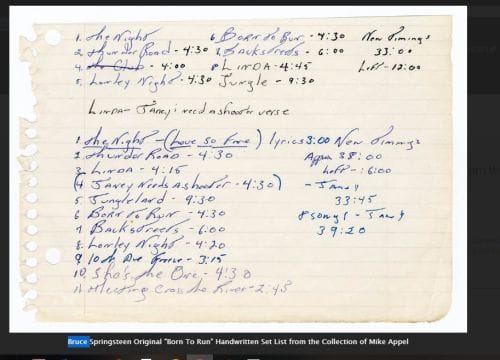
If you’re interested, you can see a collection of several these BTR-era handwritten tracklists over on Brucebase. “The Night” moves from the second track on side two (Potential Sequence #6) to the opening cut (Potential Sequence #7), to the last song on side one (Final Sequence) and then, of course, to its home in the middle of side one (Amended Final Sequence). These are very interesting portals into the inside of Bruce Springsteen’s brain as he struggled to finish this record.
"Night" remains one of Born to Run's most underrated tracks. It didn't even make it into all that many shows on the actual tour behind the album, although it was a frequent flier during the Chicken Scratch/Lawsuit Tours (the tours that the band resorted to while the Springsteen/Appel lawsuit was in progress and the only thing they could do was play live) where it usually opened the set, which is, quite frankly, the perfect place for it.
Here it is from the April 4, 1976 performance at Michigan State University thanks to our friend the late Jared Houser, a rare show from this time period in which all eight of the songs from Born to Run album were performed (but not in order, which is not a bad thing! We will discuss this show at a later juncture.)

